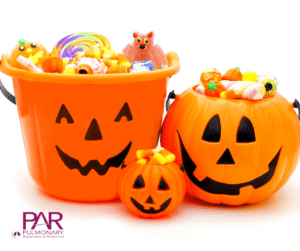For parents whose children have food allergies, Halloween can present more than its share of tricks along with treats. Many of the most popular candies that are handed out to trick-or-treaters contain nuts, dairy, and other common food allergens that could pose a risk to children with food allergies.
“Parents should carefully examine Halloween candy before allowing their children to eat it,” recommends Zeeshan Khakwani, MD, FACP, allergist at Pulmonary Associates of Richmond. “Read the ingredient label carefully to ensure that there are no ingredients listed that your child is allergic to, and also make sure that the product was not processed in a plant that also processes those problematic ingredients.”
Any items not la beled with an ingredient list should be discarded, said Dr. Khakwani.
beled with an ingredient list should be discarded, said Dr. Khakwani.
To be prepared for any emergency, Dr. Khakwani suggests that parents carry an epi-pen when accompanying children who are trick-or-treating. Children who are middle school aged and above should also know how to self-administer an epi-pen shot if needed.
Even something as innocuous as a marshmallow could present a risk to a child with a food allergy, says Dr. Khakwani. “Marshmallows may contain gelatin, which is another common food allergen that children may have.”
Some estimates put the number of children with food allergies at 5.6 million. That’s one in 13 children in the United States, or roughly two per classroom. More than 40 percent of children with food allergies have experienced a severe reaction, according to Food Allergy Research and Education (FARE).
And the prevalence of food allergies in children is increasing, according to the Centers for Disease Control and Prevention. From 1997 – 2007, food allergies increased 18% among those under the age of 18.
Children with food allergies are more likely than other children to have related conditions such as asthma and other allergies. Allergy testing and treatment can help families identify the ingredients their children need to avoid and navigate common childhood social situations.
